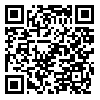Volume 4, Issue 4 (2020)
Manage Strat Health Syst 2020, 4(4): 360-369 |
Back to browse issues page
Download citation:
BibTeX | RIS | EndNote | Medlars | ProCite | Reference Manager | RefWorks
Send citation to:



BibTeX | RIS | EndNote | Medlars | ProCite | Reference Manager | RefWorks
Send citation to:
Jafari H, Ranjbar M, Mahjoub H, Ghoshoni H, Baghi M, Miankoohi E. Benefits and Challenges of Policy Options in Rationing the Hospital Radiology Services: A Case Study. Manage Strat Health Syst 2020; 4 (4) :360-369
URL: http://mshsj.ssu.ac.ir/article-1-219-en.html
URL: http://mshsj.ssu.ac.ir/article-1-219-en.html
Benefits and Challenges of Policy Options in Rationing the Hospital Radiology Services: A Case Study
Hasan Jafari1 

 , Mohammad Ranjbar1
, Mohammad Ranjbar1 

 , Hamideh Mahjoub2
, Hamideh Mahjoub2 
 , Hamed Ghoshoni3
, Hamed Ghoshoni3 
 , Mohammad Baghi3
, Mohammad Baghi3 
 , Elham Miankoohi *4
, Elham Miankoohi *4 




 , Mohammad Ranjbar1
, Mohammad Ranjbar1 

 , Hamideh Mahjoub2
, Hamideh Mahjoub2 
 , Hamed Ghoshoni3
, Hamed Ghoshoni3 
 , Mohammad Baghi3
, Mohammad Baghi3 
 , Elham Miankoohi *4
, Elham Miankoohi *4 


1- Assistant Professor, Health Policy and Management Research Center, Department of Healthcare Management, School of Public Health, Shahid Sadoughi University of Medical Sciences, Yazd, Iran
2- MSc student in Medical Education, School of Medicine, Tehran University of Medical Sciences, Tehran, Iran
3- MD student, School of Medicine, Shahid Sadoughi University of Medical Sciences, Yazd, Iran
4- MSc student in Healthcare Management, School of Public Health, Shahid Sadoughi University of Medical Sciences, Yazd, Iran
2- MSc student in Medical Education, School of Medicine, Tehran University of Medical Sciences, Tehran, Iran
3- MD student, School of Medicine, Shahid Sadoughi University of Medical Sciences, Yazd, Iran
4- MSc student in Healthcare Management, School of Public Health, Shahid Sadoughi University of Medical Sciences, Yazd, Iran
Abstract: (3978 Views)
Objective: In many countries, limiting the financial and budgetary resources is a challenge in the health system. One of the most costly parts of the health system is undoubtedly the radiology department of hospitals. Therefore, this study aimed to determine the benefits and challenges of the policies proposed for rationing hospital radiology services.
Information sources and selected methods for study: In this narrative or literature review study, Persian (SID, Magiran, Barkat Knowledge network system, Irandoc), and Latin (Google Scholar, PubMed, Scopus, ISI web of sciences) databases were searched. The applied keywords were radiology, rationing, distribution, priority setting, resource allocation, and policy brief. In the initial search, 145 articles were studied. Subsequently, after reviewing the titles and abstracts, 65 studies were selected and investigated. Finally, 44 related studies were thoroughly investigated. The inclusion criteria covered the studies in Persian or English. The exclusion criteria included the studies that did not have full texts. Our search included the studies conducted from 1/1/2000 to 1/1/ 2017.
Results: The present study examined the benefits and challenges of radiology services rationing. Policy options were presented at 3 levels of provider, organizational, and system. The provider level consisted of training clinical and non-clinical personnel to use and maintain the medical equipment and requiring the physicians to use clinical guidelines. The organization level included reviewing imaging tariffs, entering insurance in controlling supply and demand for radiology services, and assessing equipment by the Institute for Health Technology Assessment. The system level contained assignment of radiological services to the private sector.
Conclusion: As health care costs are rising and resources are increasingly constrained by ever-increasing demands, policy makers and officials can use the proposed solutions with regard to contextual conditions to design a rationing model. Services at the macro level of the health system and operationalization of the rationing process reduce the gap between supply and demand of the health services.
Information sources and selected methods for study: In this narrative or literature review study, Persian (SID, Magiran, Barkat Knowledge network system, Irandoc), and Latin (Google Scholar, PubMed, Scopus, ISI web of sciences) databases were searched. The applied keywords were radiology, rationing, distribution, priority setting, resource allocation, and policy brief. In the initial search, 145 articles were studied. Subsequently, after reviewing the titles and abstracts, 65 studies were selected and investigated. Finally, 44 related studies were thoroughly investigated. The inclusion criteria covered the studies in Persian or English. The exclusion criteria included the studies that did not have full texts. Our search included the studies conducted from 1/1/2000 to 1/1/ 2017.
Results: The present study examined the benefits and challenges of radiology services rationing. Policy options were presented at 3 levels of provider, organizational, and system. The provider level consisted of training clinical and non-clinical personnel to use and maintain the medical equipment and requiring the physicians to use clinical guidelines. The organization level included reviewing imaging tariffs, entering insurance in controlling supply and demand for radiology services, and assessing equipment by the Institute for Health Technology Assessment. The system level contained assignment of radiological services to the private sector.
Conclusion: As health care costs are rising and resources are increasingly constrained by ever-increasing demands, policy makers and officials can use the proposed solutions with regard to contextual conditions to design a rationing model. Services at the macro level of the health system and operationalization of the rationing process reduce the gap between supply and demand of the health services.
| Rights and permissions | |
 |
This work is licensed under a Creative Commons Attribution-NonCommercial 4.0 International License. |





